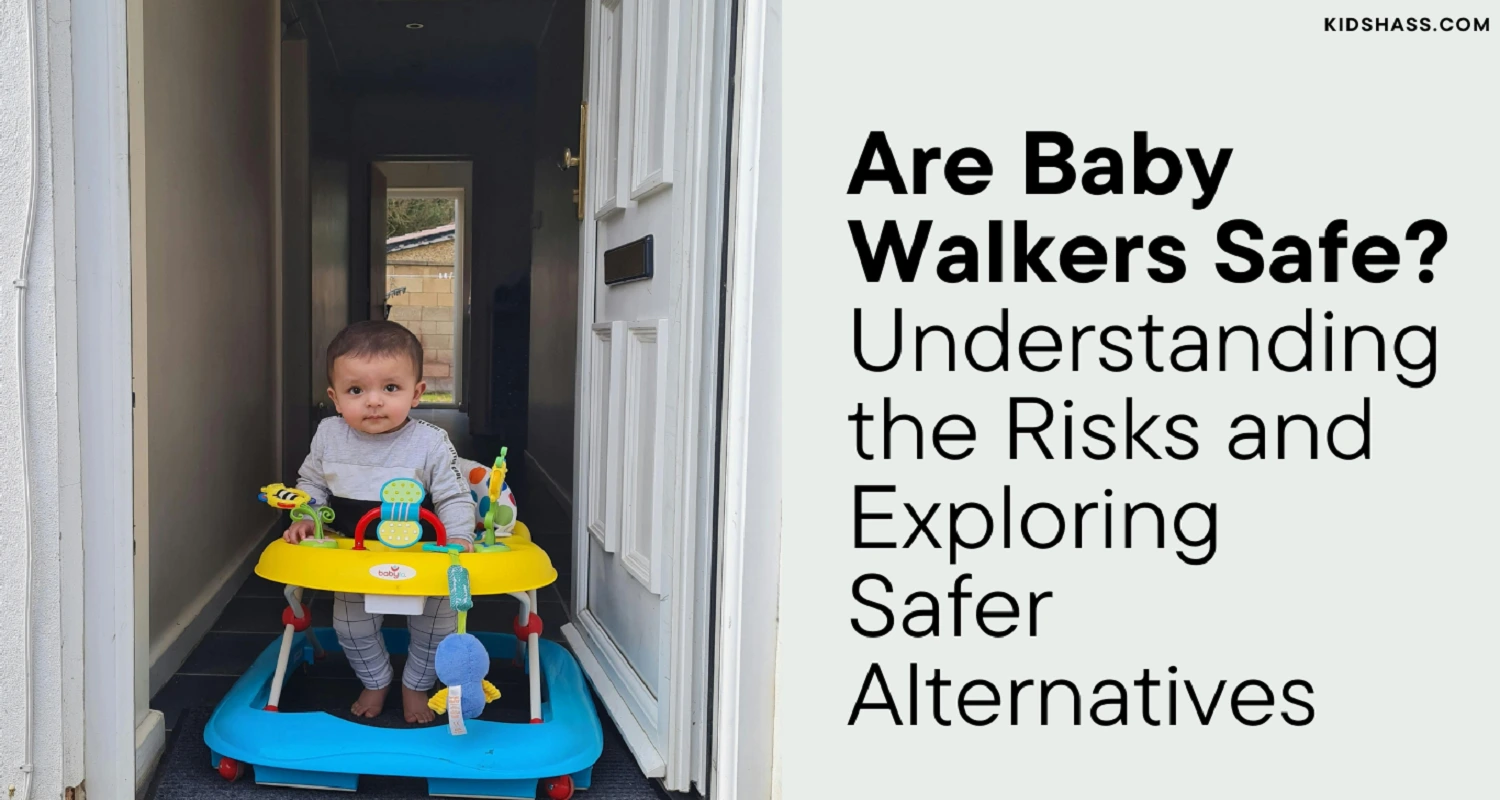Introduction
Are baby walkers safe? This is a question many parents ask when considering options for their little ones. While baby walkers might seem like fun, developmental tools, experts warn against using them. In fact, baby walkers can pose significant risks to infants, leading to injuries and developmental delays. In this article, we’ll explore why baby walkers are considered unsafe and recommend safer alternatives.
Why Are Baby Walkers Considered Unsafe?
1. Falling Down Stairs
One of the biggest dangers of baby walkers is the risk of falling down stairs. The American Academy of Pediatrics (AAP) reports that baby walker-related injuries have decreased over time, but they still occur. According to a study, 74% of baby walker injuries involve infants falling down the stairs. Babies in walkers move quickly, and a few seconds of inattention can lead to a serious accident.
2. Moving Too Fast
Walkers give babies the ability to move faster than they would while crawling. This increased speed leads to many dangerous situations. Babies in walkers can reach hazardous areas like kitchens or bathrooms before parents have time to react. This sudden mobility increases the risk of injury(Competitors articles).
3. Reaching Dangerous Objects
Walkers allow babies to reach higher places. With more mobility, babies can grab objects that are dangerous, like hot pots or sharp utensils. Several cases of burns and other serious injuries have been reported when babies in walkers pulled down harmful objects(Competitors articles).
4. Improper Leg Development
Baby walkers encourage an unnatural walking position. Babies in walkers often learn to walk on their toes, which can delay normal walking development. This unnatural position can also affect joint and muscle growth, leading to long-term walking issues(Competitors articles)(Competitors articles).
5. Babies Can’t Escape
If an accident happens, babies in walkers are trapped. Unlike other forms of baby gear, such as playpens or bouncers, walkers make it difficult for babies to escape dangerous situations. This can lead to severe injuries as babies are unable to react or move out of harm’s way(Competitors articles).
6. Increased Mobility Equals Increased Risk
A baby in a walker can move faster than a crawling infant. As babies become more mobile in a walker, they reach areas that are usually off-limits. This can include hazardous places like kitchens, where babies might pull on hot items, or bathrooms, where they could be exposed to water sources.
7. Reaching Hazardous Items
Babies using walkers can reach higher than usual. This includes potentially dangerous items such as pots on the stove, cords, or sharp objects. There have been incidents where babies in walkers have reached hot pots or pulled on items, leading to severe injuries like burns.
8. Developmental Concerns
Walkers encourage babies to walk in an unnatural way, which can delay proper motor development. Pediatricians warn that walkers can cause babies to develop abnormal walking patterns, such as walking on their toes, which may negatively affect joint and muscle growth.
Safe Alternatives to Baby Walkers
Parents naturally want to give their children tools to help them develop. However, there are many safer alternatives to traditional baby walkers that support your child’s development without the risks.
1. Stationary Activity Centers
Instead of a wheeled walker, opt for a stationary activity center. These centers allow babies to sit, bounce, and swivel safely while they explore various toys. They offer the same level of engagement but without the risk of mobility-related injuries.
2. Push Walkers
Push walkers, also known as push toys, are upright toys that babies can hold onto and push forward. Unlike traditional walkers, they don’t trap the baby in a seat. Babies can walk at their own pace, holding onto a sturdy bar. However, supervision is still necessary, as push walkers can tip over if not weighted correctly.
3. Playpens
A large playpen gives babies the space to explore without risk. It allows for unrestricted movement while keeping the child in a safe, contained area. This is an excellent way for babies to practice crawling, pulling themselves up, and eventually walking.
4. Bouncer Chairs
For babies who love to bounce, bouncer chairs offer a safe and fun option. These devices support proper leg alignment and let babies enjoy some movement without any of the risks associated with walkers.
5. Developmental Play Mats
Give your baby floor time with a developmental play mat. These mats are perfect for encouraging babies to move, roll, and eventually pull themselves up. Floor time helps them build the muscles they’ll need for walking.
Why Experts Recommend Against Baby Walkers?
Many parents use baby walkers believing they help babies learn to walk. However, research shows that walkers can delay a child’s ability to walk independently. According to HealthyChildren.org, a publication from the American Academy of Pediatrics, walkers hinder the development of essential motor skills by promoting an unnatural walking pattern(Competitors articles)(Competitors articles).
In fact, babies learn to walk best by pulling themselves up on furniture, cruising along sturdy surfaces, and practicing balancing on their own. Allowing babies floor time helps them develop the necessary muscles to walk naturally.
The Importance of Floor Time for Babies
Experts recommend allowing babies as much floor time as possible. This helps them develop the muscles they need for crawling and walking. When babies spend too much time in seats or strollers, their muscles may not develop as efficiently. Floor time encourages them to explore, pull themselves up, and practice balancing—key skills for walking.
FAQs about Baby Walkers
1. Are baby walkers banned?
In Canada, baby walkers have been banned due to safety concerns. The American Academy of Pediatrics has also called for a ban in the United States, although they are still available in some places.
2. How do baby walkers affect a child’s development?
Baby walkers can hinder proper muscle development and encourage poor walking habits. Babies who use walkers often develop a toe-walking pattern, which can lead to joint and muscle problems.
3. Can I supervise my baby in a walker to prevent injuries?
Even under close supervision, accidents with baby walkers can happen in seconds. Walkers allow babies to move faster than expected, making it difficult for parents to respond quickly enough.
4. What are safer alternatives to baby walkers?
Safe alternatives include stationary activity centers, push walkers, playpens, bouncer chairs, and play mats. These options allow babies to explore their environment safely while supporting proper motor development.
5. How do I help my baby learn to walk without a walker?
Encourage your baby to pull themselves up using furniture or your hands. Give them plenty of floor time, and let them practice cruising along sofas or other stable surfaces.
Final Thoughts: Are Baby Walkers Safe?
So, are baby walkers safe? The short answer is no. While they may seem like fun and helpful devices, the risks far outweigh the benefits. From falling down stairs to hindering proper development, baby walkers are not a recommended tool for helping your baby learn to walk. Instead, opt for safer alternatives that support your baby’s growth in a secure way. Remember, nothing beats supervised floor time when it comes to helping your child develop crucial walking skills.
For more details about Baby walkers see our article Baby Walker: What Parents Need to Know?


2 thoughts on “Are Baby Walkers Safe? Risks and Safer Alternatives”